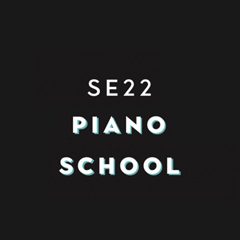Guest post by Lorraine Liyanage published on 31/01/2014 on the Cross-Eyed Pianist blog.
‘At Home with Music’ is a new permanent display in the museum’s acclaimed Music Gallery, exploring five centuries of domestic keyboard instruments which were brought into homes, from parlours to palaces. Keyboards – from harpsichords and small organs to pianos and modern electric instruments – define the language of music like no other instrument and demonstrate how intimately music figures in everyday lives, defining our ideas of home and conviviality through shared music-making. The exhibition, which also includes highlights from the Victoria and Albert Museum’s keyboard collection, offers visitors the opportunity to discover more about these remarkable instruments. It examines how musical performances have been enjoyed in the home over the centuries, and how people used keyboards, not only for private practice and tuition, but also in the rituals of courtship, marriage and social status. The design of these instruments displays not only advances in technical innovation, but also the artistic ideas of their creators, representing changing fashion and taste.
This exhibition also satisfies a longer aspiration of the Horniman Museum to make the gallery more representative and complete. The display includes organs, harpsichords, pianos and clavichords, with the earliest instrument being a virginal from 1555, and features rare and beautiful instruments, including a portable piano of the type that Captain Scott took with him on his first expedition to the Antarctic in 1901.
The display reaches out to the public in new ways through live music making in the gallery on the restored Jacob Kirckman harpsichord, a wonderful late eighteenth-century instrument, and the star of the display, whose hidden voice has been liberated through a careful restoration project over the past year. The instrument will be used for lecture demonstrations, master-classes, concert performances and music festivals.
The Kirckman harpsichord was at the heart of the launch of the exhibition with two performances by Jane Chapman, one of Britain’s most progressive harpsichordists. Her first piece was the Chromatic Fantasie BWV903 by J. S. Bach, an extravagant and brilliant work demonstrated with ease by Chapman in the demanding toccata-esque opening combined with emotional sensitivity in the following recitative-like section, leading to a virtuosic drive to the end. Following this, a ‘Hindustani Air’ from the Oriental Miscellany by W.H. Bird, a piece which would have been contemporary with the instrument, and a fascinating glimpse of eighteenth-century European attitudes to Indian music.

To coincide with the launch of At Home with Music, the Friends of the Horniman created a competition for young composers to write a piece specifically for the Kirckman harpsichord. Jane Chapman is dedicated to the harpsichord as a living instrument and has always encouraged young composers by playing, recording and teaching their works, so it was very fitting that she debuted these pieces. The first was a dark and passionate piece by Adam W. Stafford entitled ‘The Sprawl’, inspired by William Gibson’s novel Neuromancer and the conflicts between the modern and the antiquated. The second piece was ‘Vine’ by Tim Watts, a quixotic work exploring intricately intertwined patterns shared between the two manuals of the instrument with a melodic vine threading itself between the “trellis” of the instrument’s strings, an image that is central to the character of the piece. This presentation of contemporary music for the harpsichord celebrated the continuing appeal of the instrument and confirmed that it remains a living instrument, just as the piano is today.
The instruments are attractively displayed, the larger ones outside the glass cases so that visitors can get even closer to some of their exquisite details, while accompanying videos, drawings and explanations get inside the instruments to demonstrate how they work. The display also includes contemporary opinions and attitudes of those who knew the instruments and lived and played them, thus bringing these wonderful instruments to life for the modern visitor.
Lorraine Liyanage is a harpsichordist and piano teacher based in south-east London. A keen advocate of music in the community, she is founder of the Dulwich Music Festival, now in its third year, co-host of the London Piano Meetup Group, and co-founder and curator, with Frances Wilson, of the innovative South London Concert Series, which brings professional and amateur pianists together in the same formal concert setting.
 Lorraine performs at Handel House Museum on Friday 11th July. Further details and tickets here
Lorraine performs at Handel House Museum on Friday 11th July. Further details and tickets here
